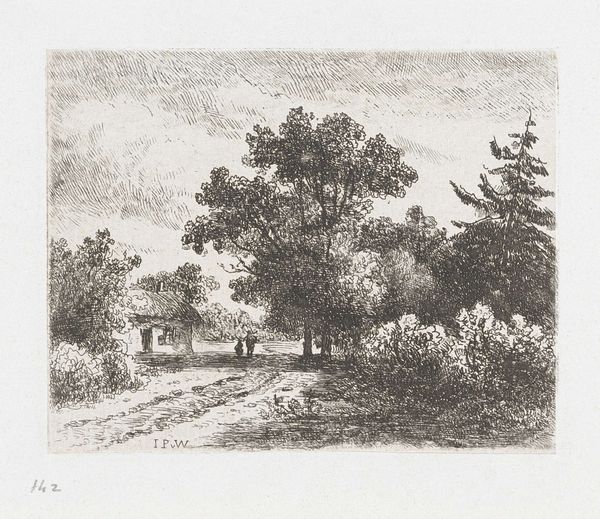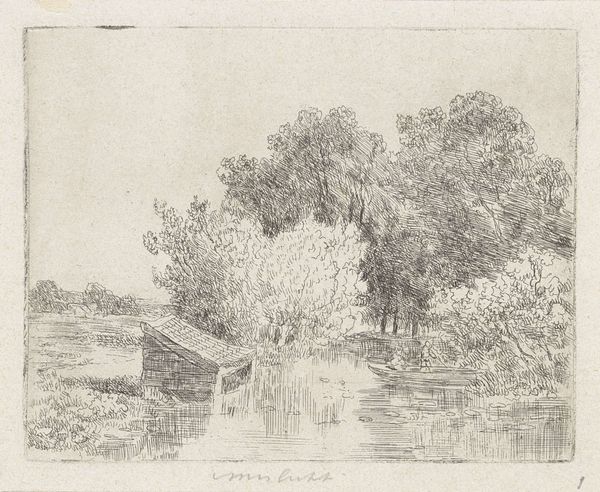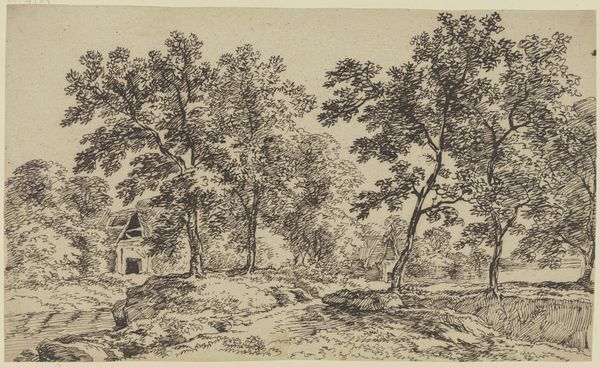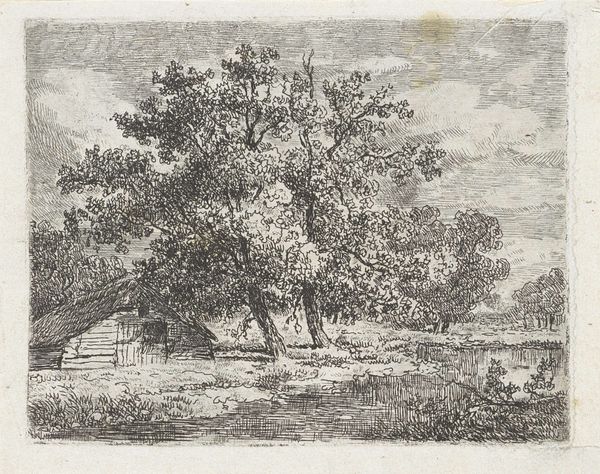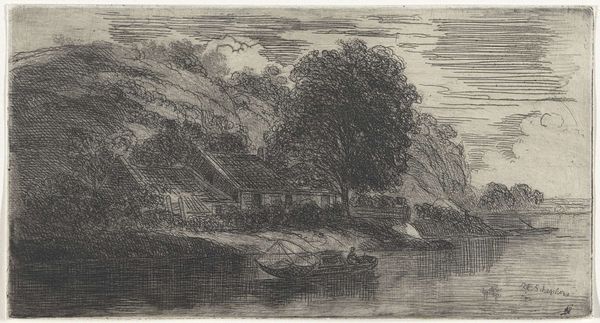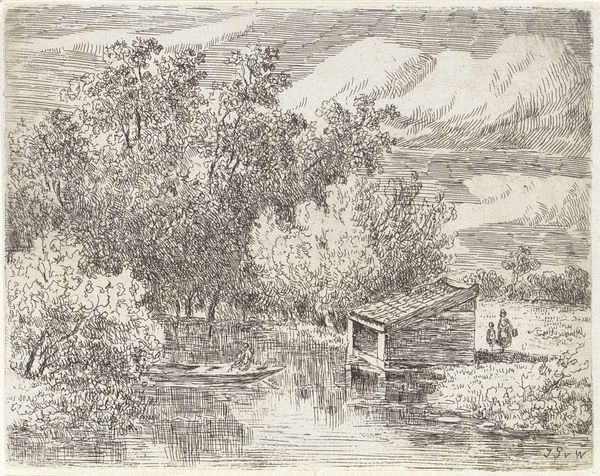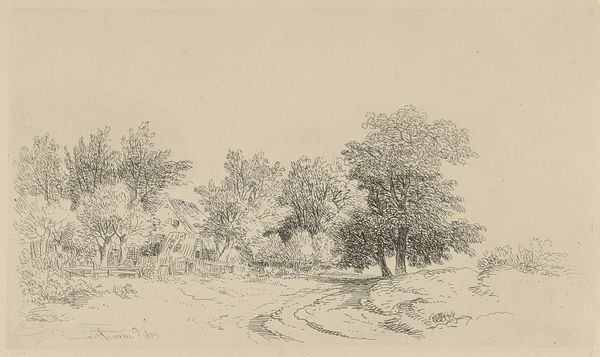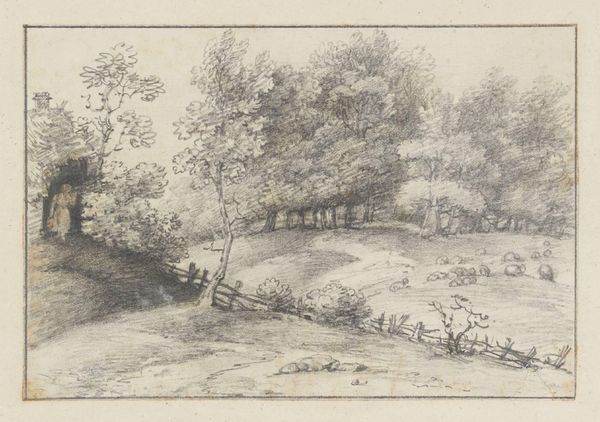
print, etching
# print
#
etching
#
landscape
#
river
#
line
#
cityscape
#
realism
Dimensions: height 97 mm, width 122 mm
Copyright: Rijks Museum: Open Domain
Editor: This is "Boothuis aan een rivier," or "Boathouse on a River," an etching from somewhere between 1830 and 1882, currently held at the Rijksmuseum, and attributed to an anonymous artist. I’m struck by the seeming emptiness of the scene, but maybe that says more about me. How do you read this print? Curator: Well, let’s start with the boathouse itself. It isn’t just a structure for boats, is it? It speaks to access and ownership, perhaps of the river itself, but also to leisure, suggesting a social hierarchy that allows for such pastimes. What do you think? Editor: That’s interesting. I was focusing on the stillness and calm, not necessarily on class. Curator: Consider the industrial revolution then underway. Nature became romanticized precisely as it was disappearing from the lives of many. This seemingly idyllic scene becomes, perhaps, a quiet critique or, at least, a reflection on the changing social landscape. What about the lone figure; how do you read them in the context of leisure and privilege? Editor: The figure walking nearby… Almost as if work continues even amidst leisure? Or perhaps even highlights the loneliness in the picture. Curator: Exactly. The figure underscores the quietude, yet their presence also complicates the narrative. Are they an observer, a participant, or simply a reminder of the labor that makes leisure possible? Consider the role of art at this time - who had the ability to appreciate such works and what does that mean about whose story gets told? Editor: That’s made me think a lot differently about it. It's more charged than I initially thought. Curator: Precisely. Art isn't created in a vacuum; it reflects and refracts the social and political currents of its time, so it is a conversation we need to keep going.
Comments
No comments
Be the first to comment and join the conversation on the ultimate creative platform.
